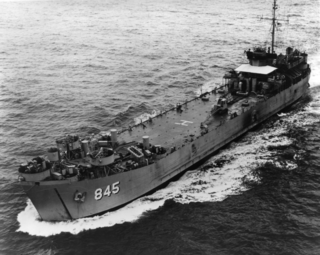
USS Jefferson County (LST-845) was an LST-542-class tank landing ship built for the United States Navy during World War II. Named after counties in 25 states, she was the only U.S. Naval vessel to bear the name.

USS Marion County (LST-975) was an LST-542-class tank landing ship built for the United States Navy during World War II. Like many of her class, she was not named and is properly referred to by her hull designation. She was later named after counties in seventeen U.S. states, she was the only US Naval vessel to bear the name.

USS Logan (APA-196) was a Haskell-class attack transport of the United States Navy, named for counties in Colorado, Illinois, Kansas, Kentucky, Ohio, Oklahoma, Nebraska, North Dakota, and West Virginia. The Haskell-class design, United States Maritime Commission standard type VC2-S-AP5, is a sub type of the World War II Victory ship design.

USNS Harris County (T-LST-822) was an LST-542-class tank landing ship built for the United States Navy during World War II. Named for counties in Georgia and Texas, she was the only U.S. Naval vessel to bear the name.
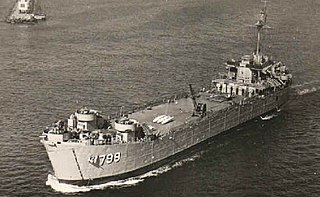
USS Greer County (LST-799) was a LST-542-class tank landing ship (LST) built for the United States Navy during World War II. She was named for Greer County, Oklahoma on 1 July 1955, and the only U.S. Naval vessel to bear the name.
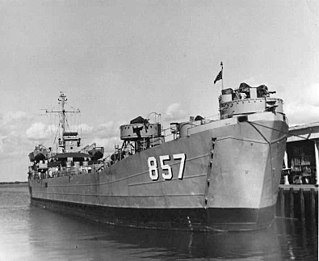
USS King County (LST-857) was an LST-542-class tank landing ship built for the United States Navy during World War II. Named after counties in Texas and Washington, she was the only U.S. Naval vessel to bear the name.

USS Sedgwick County (LST-1123) was an LST-542-class tank landing ship in the United States Navy. Unlike many of her class, which received only numbers and were disposed of after World War II, she survived long enough to be named. On 1 July 1955, all LSTs still in commission were named for US counties or parishes; LST-1123 was given the name Sedgwick County, after counties in Colorado and Kansas.

USS Outagamie County (LST-1073) was an LST-542-class tank landing ship in the United States Navy. Unlike many of her class, which received only numbers and were disposed of after World War II, she survived long enough to be named. On 1 July 1955, all LSTs still in commission were named for US counties or parishes; LST-1073 was given the name Outagamie County, after Outagamie County, Wisconsin.

USS Pitkin County (LST-1082) was an LST-542-class tank landing ship built for the United States Navy during World War II. Named after Pitkin County, Colorado, she was the only U.S. Naval Vessel to bear the name.
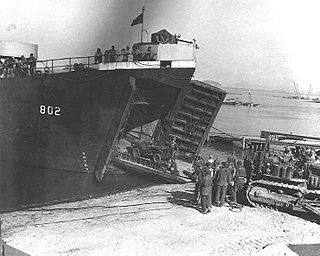
USS Hamilton County (LST-802) was an LST-542-class tank landing ship built for the United States Navy during World War II. Named after counties in Florida, Illinois, Indiana, Iowa, Kansas, Nebraska, New York, Ohio, Tennessee, and Texas, she was the only U.S. Naval vessel to bear the name.
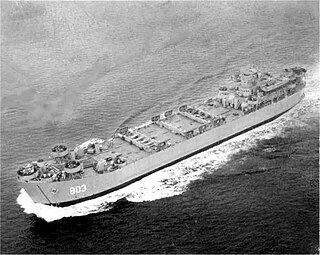
The USS Hampden County (LST-803) was an LST-542-class tank landing ship built for the United States Navy during World War II. Named after Hampden County, Massachusetts, she was the only U.S. Naval vessel to bear the name.

USS Henry County (LST-824) was an LST-542-class tank landing ship built for the United States Navy during World War II. Named for counties in Alabama, Georgia, Illinois, Indiana, Iowa, Kentucky, Ohio, Tennessee, and Virginia.

USS Hillsborough County (LST-827) was an LST-542-class tank landing ship built for the United States Navy during World War II. Named after Hillsborough County, Florida, she was the only U.S. Naval vessel to bear the name.

USS Kemper County (LST-854) was an LST-542-class tank landing ship built for the United States Navy during World War II. Named after Kemper County, Mississippi, she was the only U.S. Naval vessel to bear the name.
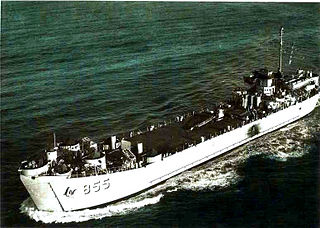
USS Kent County (LST-855) was an LST-542-class tank landing ship built for the United States Navy during World War II. Named after counties in Delaware, Maryland, Michigan, Rhode Island, and Texas, she was the only U.S. Naval vessel to bear the name.

USS Lafayette County (LST-859) was an LST-542-class tank landing ship built for the United States Navy during World War II. Named after counties in Arkansas, Florida, Mississippi, Missouri, and Wisconsin, and a parish in Louisiana, she was the only U.S. Naval vessel to bear the name.
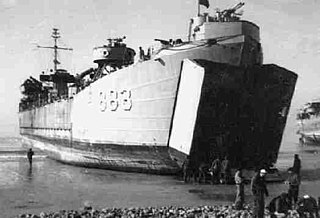
USS La Moure County (LST-883) was an LST-542-class tank landing ship built for the United States Navy during World War II. Named after LaMoure County, North Dakota, she was the first of two U.S. naval vessels to bear the name.
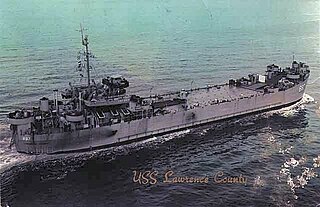
USS Lawrence County (LST-887) was a LST-542-class tank landing ship built for the United States Navy during World War II. Named after counties in eleven U.S. states, she was the only U.S. Naval vessel to bear the name.

USS Westchester County (LST-1167) was a Terrebonne Parish-class tank landing ship built for the United States Navy at the tail end of the Korean War. Named for Westchester County, New York, she was the only U.S. Naval vessel to bear the name. The ship served in the Vietnam War and was damaged by limpet mines set by Viet Cong frogmen. It was repaired and later sold to the Turkish Navy and finally sunk as a target in 2014.

USS Windham County (LST-1170), previously USS LST-1170, was a United States Navy landing ship tank (LST) in commission from 1954 to 1973 which saw service in the Atlantic, Caribbean, and Pacific and served in the Vietnam War.




















